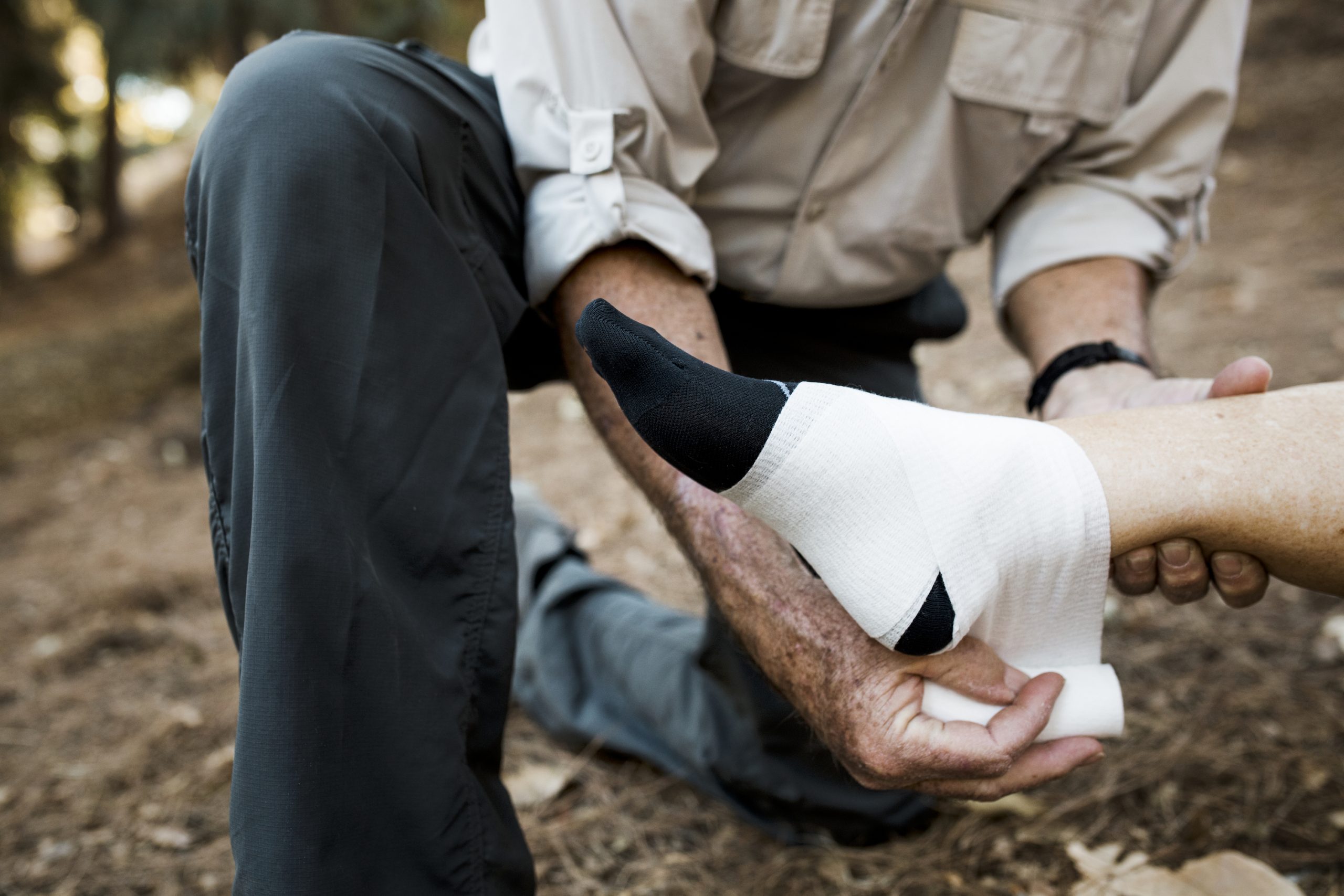Several types of injuries can occur on the job. Serious injuries that require expensive medical procedures and/or long-term recovery may be covered by worker’s comp insurance. But what type of injuries require worker’s comp coverage?

This article will explain various types of workers comp injuries that may result in a claim.
Common Workers Comp Injuries
Repetitive Stress Injuries
Repetitive stress injuries (RSIs) are workers comp injuries that occur due to repetitive movements. They are likely to occur in someone who performs the same movements each day. For example, they may occur in a person who works on a computer or assembly line in their line of work.
Common RSIs include:
- Carpal tunnel syndrome
- Bursitis
- Rotator cuff tendonitis
- Tennis elbow
People can typically recover from these workers comp injuries with rest. They may undergo physical therapy to promote healing and to learn new techniques that will not cause the condition to reoccur.
Strains and Sprains
Strains are workers comp injuries to the muscle or connective tissues. They occur when ligaments, the bands of tissues that connect two joints, are stretched or torn. They can affect the ankles, lower or upper back, shoulders, or hamstrings.
Workers in the manufacturing, transportation, moving, and warehouse industries are prone to strains. They can occur when you are lifting, pushing, pulling, or carrying too much weight. They can also be caused by unnatural movements or collisions that exert force against ligaments.
Strains rarely require medical attention. However, workers may need to take time off work to heal. In rare cases, they may require surgery which can be covered by workers comp insurance.
Cuts and Punctures
Cuts and punctures are workers comp injuries that can occur in any industry. An office worker can get their finger caught in a stapler almost as easily as a construction worker can get punctured by a sharp tool.
These types of injuries can often be taken care of with an antibacterial wash and a Band-Aid. But in some instances, wounds can become infected, and the worker will require medical care until the infection is under control. A bad cut or puncture can also require stitches and time off work.
Work-Related Illnesses
Illnesses also fall under the category of workers comp injuries. They are typically caused by exposure to a certain chemical or hazardous injuries. Common work-related illnesses include:
- Cancer including asbestosis and mesothelioma
- Black lung disease
- Respiratory illness
- Chronic Obstructive Pulmonary Disease (COPD)
Stress can also cause work-related illnesses. A stressful work environment can lead to heart conditions and mental health problems. These conditions can be covered by worker’s comp, but it may be harder to prove that your condition is linked to your occupation.
Fractures

Fractures are other types of work-related injuries that can occur in any workplace. A construction worker can fall from a high beam and break his leg. An office worker may encounter a cluttered area and fall and break their hip.
Broken bones can take weeks or months to heal. Workers will require some downtime to recover. They may also need assistance paying their medical bills. Worker’s comp can cover these expenses.
Burns
Burns often occur in workplaces that use chemicals or work with electrical components. However, a fire can also break out and cause these workers comp injuries.
Various types of burns can occur in the workplace as follows:
- First-degree burns: A first-degree burn will only affect the outer layer of the skin. It may be treated with cold water and ointments. A person with a first-degree burn should not require medical treatment.
- Second-degree burns: A second-degree burn affects the epidermis and lower layer of the skin. It requires medical attention.
- Third-degree burns: Third-degree burns destroy the epidermis and dermis and go through to the subcutaneous tissue, the innermost layer of the skin.
- Fourth-degree burns: Fourth-degree burns go through both layers of the skin and the underlying tissue. They may affect the muscles and bones.
The burn type will affect the medical care you receive, the time you need to take time off work, and your worker’s comp benefit amount.
Hearing Loss
Hearing loss can occur in a loud workplace like a factory or construction site. Military members often suffer hearing loss due to explosions and gunshots.
Employers should provide workers with quality earplugs that prevent hearing loss. It is up to the worker to wear them.
In some instances, the earplugs may not be high quality and may result in hearing loss. But if workers refuse to wear them, they will be responsible for impaired hearing and may not be eligible for workers comp.
Amputations
Amputations are common in workers who use heavy machinery and equipment. These workers comp injuries can affect any part of the body. They present severe limitations that may impact the individual’s ability to work permanently.
Hernias
A hernia occurs when part of an organ protrudes through the muscle wall. It commonly affects the abdomen or groin. The most common cause is heavy lifting. Therefore, workers who lift heavy objects are prone to these workers comp injuries.
Traumatic Brain Injuries

Traumatic brain injuries are caused by a violent blow or jolt to the head or body. It can also be caused by an object that goes through the brain tissue. It can lead to bruising, torn tissues, and other types of physical damage.
A TBI typically occurs in dangerous industries like construction. It is also a common car accident injury. It can occur in individuals who drive often during the workday.
Workers comp injuries should be avoided at all costs. But if they occur, workers comp insurance may cover your medical care and lost wage expenses. Good luck staying safe at work.
